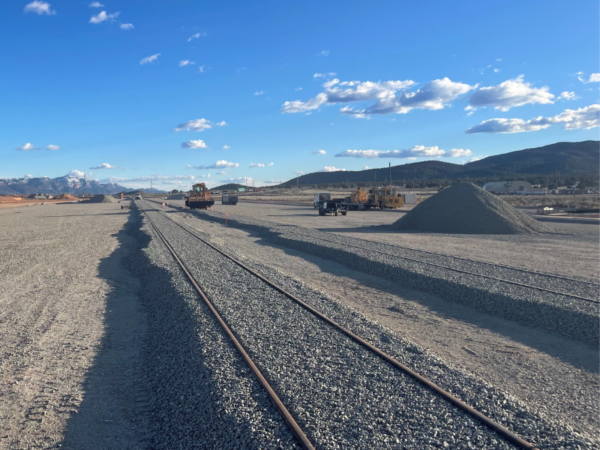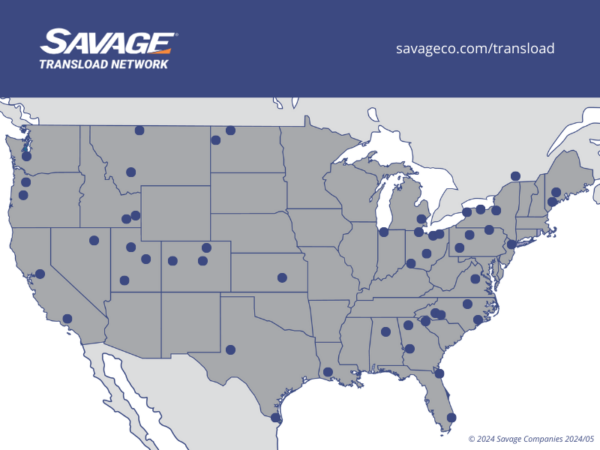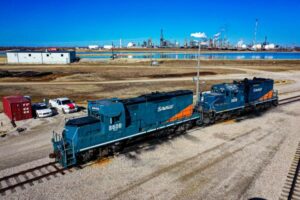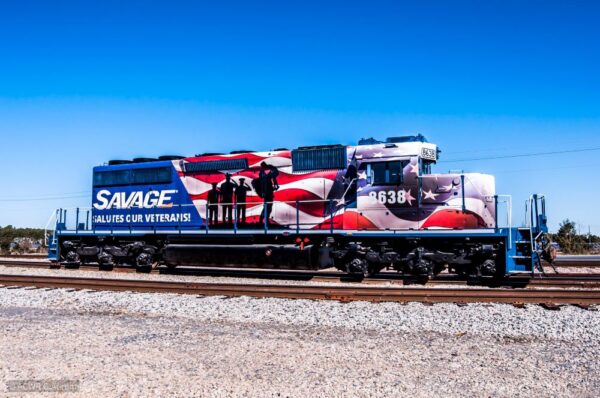
Savage Transload Network Grows with Cedar City, UT Transload
In 1946, Savage was founded by a father and a son who wanted to help area business owners shuttle supplies and material from one local destination to another. This was a small operation, using only a single truck for deliveries and relying on good word-of-mouth in the community to drive more business.
78 years later, Savage is a trusted name in global transportation, hauling more than 22.8 million tons of product annually. At the center of this effort is the Savage Transload Network, a series of rail terminals that span North America, with sustainable transportation options to help Customers move the materials and products that matter most to their business.
The newest addition to the Savage Transload Network is our Cedar City, UT Transload, a greenfield project in Iron County, Utah.
The Big Picture
The Cedar City, UT Transload facility accommodates the growing markets for businesses and ag producers that ship freight through Southern Utah. They have traditionally relied on trucks to move their products, due to limited rail access. The Savage Transload Network in Iron County is elevating their supply chain by:
- Providing transload services so all types of products can be shipped
- Making sustainable transportation more achievable thanks to rail accessibility
- Enriching the market by making Iron County a better place to do business
With the help of all-new infrastructure and a team of experienced professionals, Customers can rely on the Savage Transload Network’s Cedar City, UT Transload facility to help maximize profits by moving products efficiently.
A Greenfield Project for All Customers
A facility the size and scope of Cedar City, UT Transload isn’t thought of, designed, or created in a vacuum. From the outset, Savage developers seek to expand the Savage Transload Network in ways that best help both the community and the Customer.
For Brig Skoy, director of terminal development at Savage, an effective greenfield project is made for the people, with input by the people. “We meet with Customers in the area to learn what products they’re moving today, and that sets the stage for what kind of facility would serve their needs.”
Customers in Iron County noted they wanted to:
- Find a more sustainable transportation method, where trucking is not the sole option to move cargo
- Have a place that makes it easier for smaller companies to utilize rail without the burden of creating their own rail lines or switches
- Make multi-commodity shipping a reality for the area by installing open infrastructure used by the public
- Create a reason for more businesses to set down roots in Southern Utah
Knowing what’s at stake for these businesses, Savage engineers, with the help of Union Pacific Railroad, began to shape this greenfield project to specifically address their needs. This meant designing the facility to handle all products current and future Customers ship.
The Cedar City, UT Transload facility is a direct result of these plans. The facility handles all kinds of dimensional freight, dry and liquid bulk, hazardous materials, and food-grade products. “A lot of that material, historically, is all coming in by truck,” says Skoy. “And now we can move it in by rail, store it at our facility, and then deliver it to job sites in different areas throughout the region.”
Cedar City Makes Sustainable Transportation the Future for Utah Businesses
By expanding the Savage Transload Network to Iron County, rail accessibility is now more convenient for important Southern Utah hubs – cities like Cedar City and St. George. This raises the bar for sustainable transportation in the community.
Fulfilling our environmental responsibilities fits squarely within Savage’s Vision and Legacy statement, a declaration from the company’s founders of how it will do business. “We expect our people to be progressive, relentlessly seeking improvement – asking the question, ‘How can we become better tomorrow than we are today?’”
Phillip Hoskins, a vice president on Savage’s business development team, believes the move to a more rail-centric supply chain is good both for business and the environment. “Having a transload connection near Cedar City to the country’s vast rail network opens the door to new markets for area businesses and ag producers, and also allows them to ship products and materials in a more cost-effective and environmentally friendly way compared to long-haul trucking.”
When looking at sustainable transportation, it’s helpful to see the benefits broken down by the numbers.
- 1 gallon of fuel can move 1 ton of goods
- 30 miles on a truck
- 410 miles on a trail
- Ultra-low emissions locomotives can:
- Reduce emissions by over 90%
- Generate fuel savings over 70%
Cedar City, UT Transload is designed to accommodate businesses who want to achieve both efficiency and sustainability, while also reducing their supply chain costs. Together, Savage, the Utah Inland Port Authority, Union Pacific, and the Customers who use the terminal can make a long-term difference for the environment with sustainable transportation.
Savage Transload Network Benefits Businesses in Southern Utah
One of the strengths of this greenfield project is how it brings a host of economic benefits to Customers and the community. By expanding the rail lines and adding permanent infrastructure to the area, the supply chain becomes far more streamlined. “When you put these assets in an area,” said Skoy, “it really helps a site selector that’s out there looking for a place to locate their manufacturing facility. They now have access to these resources.”
“We’re excited to expand our Savage Transload Network into Southern Utah,” commented Savage Infrastructure Sector President Jason Ray. “[This facility] will drive economic growth and support jobs by helping connect farmers and businesses in Cedar City, St. George, and rural communities throughout Southern Utah with broader domestic and global markets.”

From an infrastructure and services standpoint, Cedar City, UT Transload offers a host of benefits to Customers in the area, including:
- Room for track and warehouse expansion
- Yard space for dimensional products
- Forward placement convenience
- Steaming and blending capabilities
- Certified truck scale
Profitability Through Efficiency
One of the biggest benefits that shifting to a rail-centric transload model brings to businesses is profitability through efficiency. Trucking may have a wider network of roads to use when transporting goods, but it can bottleneck with its limitations. These include inventory drawbacks of the trucks themselves, the constant need for maintenance, how quickly fuel is used, and the limited amount of tonnage that can be moved at any one time.
Rail addresses each of these issues. For instance, one railcar’s-worth of freight is equivalent to 4 standard semi-truck trailers. This scalability of volume allows for business growth as more products get into the hands of more Customers.
Improving Outcomes for the Community
Brig Skoy believes that these benefits will scale to not only improve a business, but ultimately a whole community and the lives of the people who live and work there. “Ultimately we are improving outcomes,” he explained. “As all this efficiency and effectiveness trickles down into a community, you’re improving outcomes for people who are trying to provide for their families.”
With the completion of this new greenfield project, the Savage Transload Network brings new horizons of profitability to Savage’s current and future Customers in Southern Utah.
Learn more about Cedar City, UT Transload


